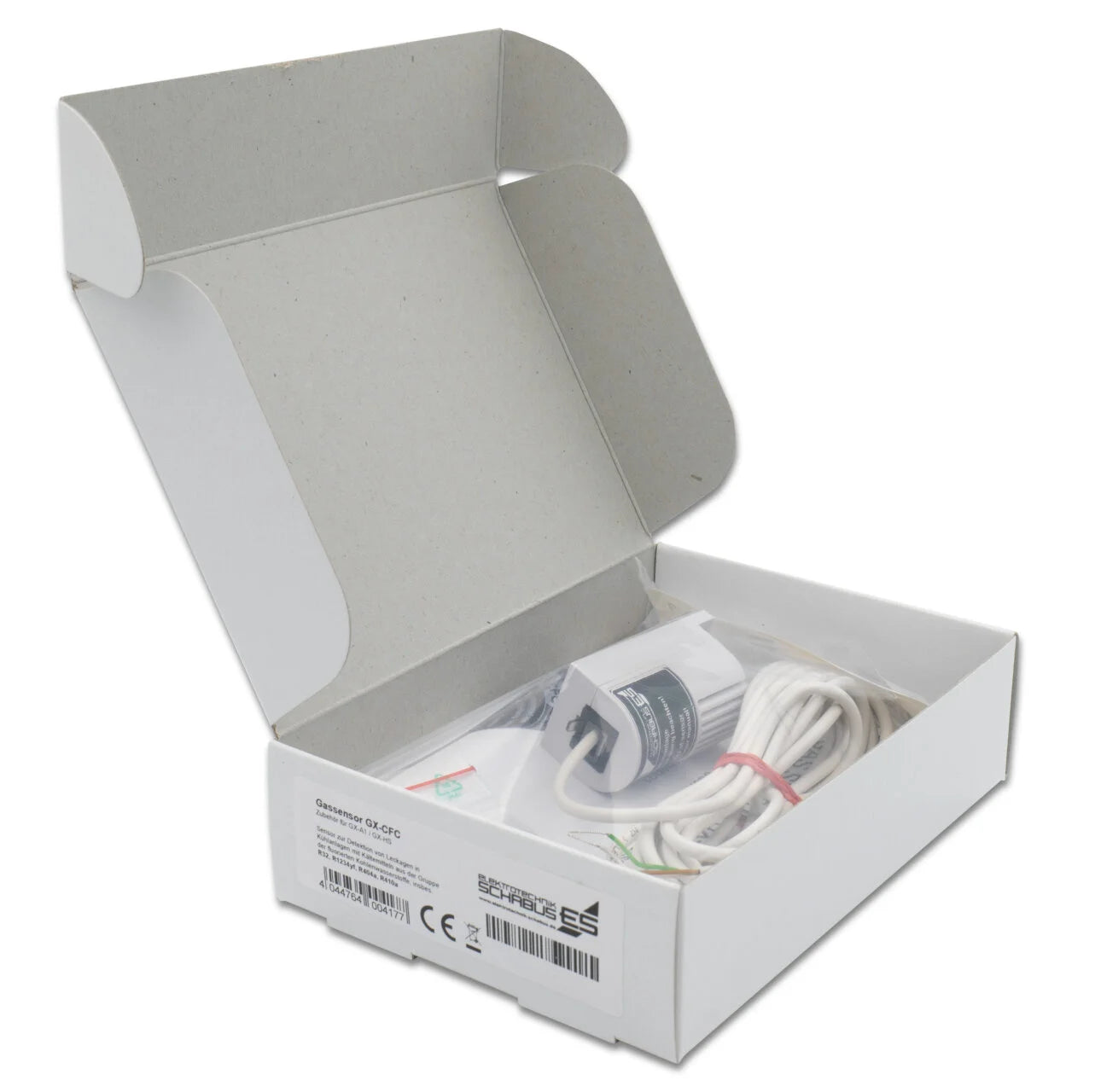Do you have an account?
Log in, so that checkout is faster.
Availability for pickups could not be loaded
Item number: 200901
Delivery time: 2-3 working days
View full details







Scope of delivery

What are HFC refrigerants?
A refrigerant is a fluid used in refrigeration systems for heat transfer. It absorbs heat at low pressure and temperature and releases it again at higher pressure and temperature. The refrigerant's physical state changes from liquid to gas and vice versa. Fluorinated greenhouse gases have fluorine in common. Typical examples are fluorinated hydrocarbons such as tetrafluoromethane (CF4), partially fluorinated hydrocarbons such as trifluoromethane (CHF3), and sulfur hexafluoride (SF6).
Fluorocarbons (PFCs, HFCs) are considered climate-damaging substances. They are divided into fully halogenated (PFCs) and partially halogenated fluorocarbons (HFCs). PFCS are hydrocarbons whose hydrogen atoms are fully replaced by fluorine atoms. HFCs are hydrocarbons whose hydrogen atoms are partially replaced by fluorine atoms. They have very different GWP values/CO2 equivalents and contribute to the warming of the Earth's atmosphere, i.e., to the so-called greenhouse effect.
Heat pumps need a coolant
The terms "refrigerant" and "coolant" are often used synonymously. However, this is technically incorrect. The difference between a refrigerant and a coolant is that a refrigerant can remove heat even when the ambient temperature is higher than the temperature of the object being cooled. A coolant, on the other hand, can only remove heat from an object when the ambient temperature is colder. For example, the coolant heated by a car's engine releases heat into the cooler environment.
To achieve temperatures below ambient temperature, a refrigerant is required in industrial applications, refrigerators, freezers, and air conditioning systems. This is also true for the increasingly popular heat pumps. The temperature inside should always be lower than outside.
A heat pump therefore works in reverse. It extracts heat from the environment and transfers it to the building or heating system. Depending on the type of heat pump, the refrigerant circuit can be installed separately or integrated into the unit.
WEEE NO.: DE91394868
| Operating voltage | 5 V +/- max. 0.1 Volt |
|---|---|
| Functional area | -20°C / +40°C, optimal 20°C |
| Protection class | IP20 |
| Dimensions(WxWxD) | |
| Life | approx. 5 years |
| Line | 2.5 m max., Ø 3.5 mm |
| Humidity | 5-90% rH, non-condensing |
| Trigger concentration | approx. 1000 ppm to 10,000 ppm refrigerant depending on the gas |
| Control voltage | Output 0.4 – 4.5 V, output voltage 03.3V DC, current consumption max 150 mA |
| Electricity | 56±5mA heating current |
| Temperature | -20°C / + 60°C storage temperature |
Scope of delivery

What are HFC refrigerants?
A refrigerant is a fluid used in refrigeration systems for heat transfer. It absorbs heat at low pressure and temperature and releases it again at higher pressure and temperature. The refrigerant's physical state changes from liquid to gas and vice versa. Fluorinated greenhouse gases have fluorine in common. Typical examples are fluorinated hydrocarbons such as tetrafluoromethane (CF4), partially fluorinated hydrocarbons such as trifluoromethane (CHF3), and sulfur hexafluoride (SF6).
Fluorocarbons (PFCs, HFCs) are considered climate-damaging substances. They are divided into fully halogenated (PFCs) and partially halogenated fluorocarbons (HFCs). PFCS are hydrocarbons whose hydrogen atoms are fully replaced by fluorine atoms. HFCs are hydrocarbons whose hydrogen atoms are partially replaced by fluorine atoms. They have very different GWP values/CO2 equivalents and contribute to the warming of the Earth's atmosphere, i.e., to the so-called greenhouse effect.
Heat pumps need a coolant
The terms "refrigerant" and "coolant" are often used synonymously. However, this is technically incorrect. The difference between a refrigerant and a coolant is that a refrigerant can remove heat even when the ambient temperature is higher than the temperature of the object being cooled. A coolant, on the other hand, can only remove heat from an object when the ambient temperature is colder. For example, the coolant heated by a car's engine releases heat into the cooler environment.
To achieve temperatures below ambient temperature, a refrigerant is required in industrial applications, refrigerators, freezers, and air conditioning systems. This is also true for the increasingly popular heat pumps. The temperature inside should always be lower than outside.
A heat pump therefore works in reverse. It extracts heat from the environment and transfers it to the building or heating system. Depending on the type of heat pump, the refrigerant circuit can be installed separately or integrated into the unit.
WEEE NO.: DE91394868
| Operating voltage | 5 V +/- max. 0.1 Volt |
|---|---|
| Functional area | -20°C / +40°C, optimal 20°C |
| Protection class | IP20 |
| Dimensions(WxWxD) | |
| Life | approx. 5 years |
| Line | 2.5 m max., Ø 3.5 mm |
| Humidity | 5-90% rH, non-condensing |
| Trigger concentration | approx. 1000 ppm to 10,000 ppm refrigerant depending on the gas |
| Control voltage | Output 0.4 – 4.5 V, output voltage 03.3V DC, current consumption max 150 mA |
| Electricity | 56±5mA heating current |
| Temperature | -20°C / + 60°C storage temperature |